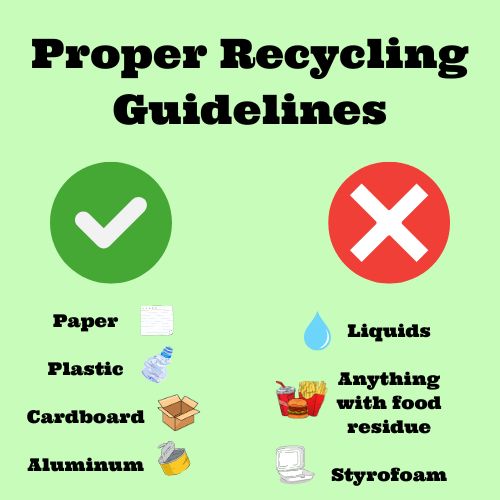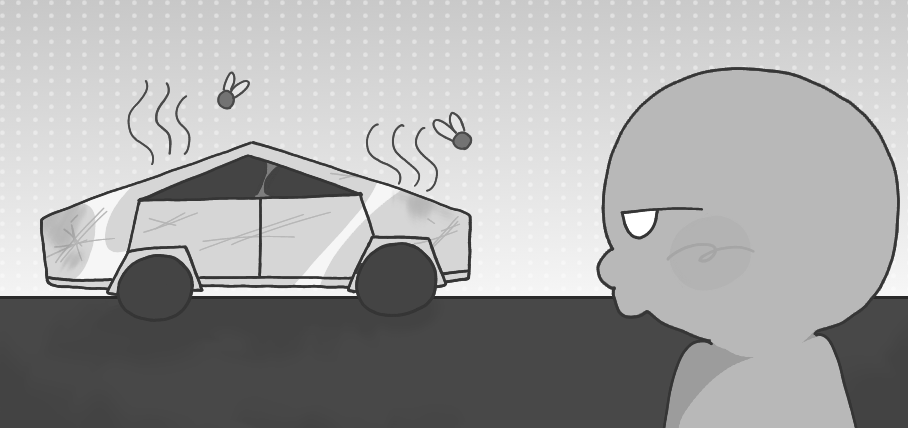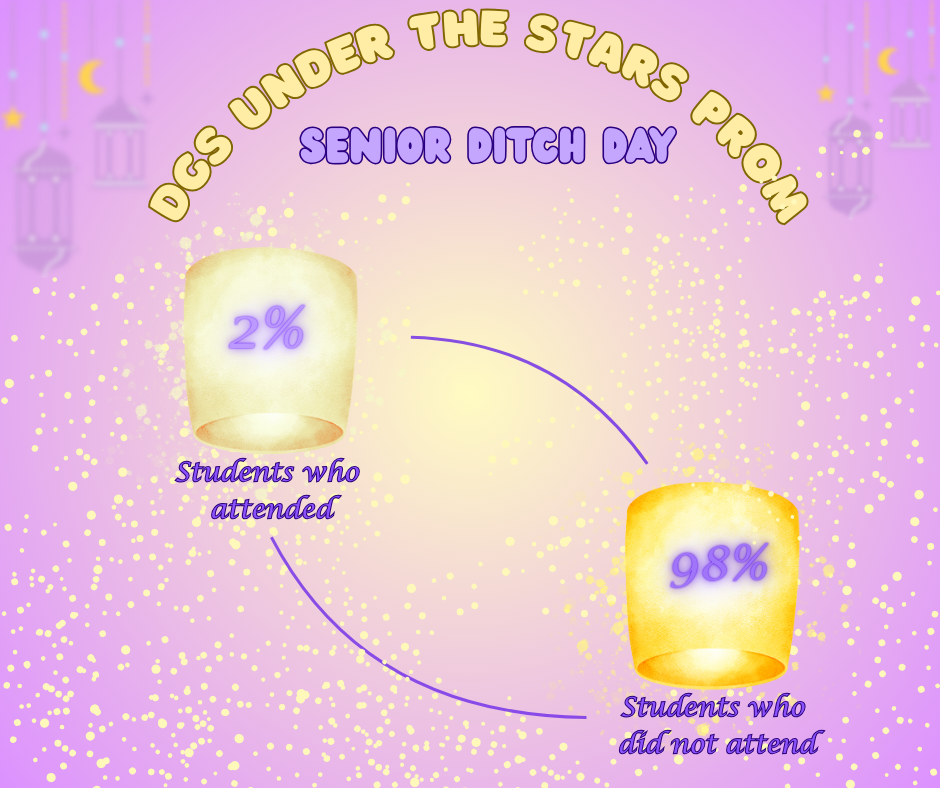The “reduce, reuse and recycle” mantra has been drilled into the minds of students since elementary school. The latter term is most represented at DGS with plastic blue bins in every classroom and metal recycling containers in the commons. While students and staff have access to easy recycling methods, much of what is thrown into those bins ends up at the landfill.
“A lot of the times, because food and things like that gets mixed into stuff, it can’t go in the recycling bin. It has to actually go into the garbage,” CMG executive administrative assistant Alex Jones said.
Often, students throw items with food residue or liquid still on them into the recycling bins. These items cannot be recycled and once they touch other waste everything in the bin must be dumped in the trash.
CMG normally sorts through the recycling bins, deciding whether or not the items can be salvaged or have to be put in the garbage.
Once a week, Go Green Mondays take place, where the special services department organizes groups of students to go around and collect recycling. According to special services department chair Alyssa Gunderson, general and special education students pour the contents of blue classroom bins into a larger container. They then take this haul to the loading dock, where they use the compactor to prepare the materials for recycling.
“They are not sorting through the recycling,” Gunderson said. “If we notice that there’s something in the bin that’s obviously not a recyclable material, we will pull that out and put it in the trash. But for the most part, I would say the staff and students are pretty good about putting stuff into the recycling bins.”
The U.S. Environmental Protection Agency lists many economic and communal benefits from recycling, such as energy conservation and support for American manufacturing. But above all, recycling helps to protect the environment by reducing pollution and greenhouse gases while protecting natural resources, land and water.
Senior Becca Snouffer wants to study environmental sustainability in college and therefore takes recycling at school seriously.
“It’s important to do our part to help the environment and putting waste in landfills that could be easily turned into something else rather than sitting there for hundreds of years is ridiculous. It’s such an easy task to just recycle something that you know can be recycled, so it’s an easy way to help out,” Snouffer said.
One of the reasons recycling bins are contaminated with ineligible items is a lack of knowledge and awareness amongst the student body.
“A lot of people just don’t really think about it, but if you see a visual that tells you, you might be more conscious about what you’re doing,” sophomore Shivang Patel said.
Snouffer also suggested the school add signage above recycling bins to inform the student body of what can and cannot be recycled.
“I’ve seen on college campuses or in some restaurants that they have a sign of examples of what you can recycle versus throw out. That helps people so you don’t have to look it up or you don’t have to just know. The school could help guide that,” Snouffer said.
Whether or not signs are located outside bins, there are some simple rules that everyone should follow to ensure the maximum amount of materials are recycled.
“Easy rule of thumb, if it has any type of food or liquid on it or contained in it, that’s not recycling, that goes in the garbage. Outside of that, you can nine times out of 10 toss it in the recycling. So just pay attention where you’re putting your garbage and the process for that,” Jones said.
Recycling at school can also have emotional benefits for younger generations.
“I think one of the major benefits is the socialization and the involvement in the school community,” Gunderson said. “You know, our special services population, those students want to be involved in the school community…and I think Go Green Mondays provides an opportunity,” Gunderson said.






![In this documentary, you will learn how violins are made. All music is in the public domain:
Music Produced by Deutsche Grammophon, Medici TV, Heifetz Institute, and Queen Elisabeth competition
Paganini, Caprice No. 24 [Song recorded by Jasha Heifetz]. Heifetz Institute. (Original work published 1817)
Paganini, Caprice No. 24 [Song recorded by Jasha Heifetz]. Heifetz Institute. (Original work published 1817)
Bartok, Sonata No.1 for Solo Violin [Song recorded by Kevin Zhu]. Queen Elizabeth Competition. (Original work published 1944)
Paganini, Violin Concerto no. 1 [Song recorded by Philippe Hirshhorn]. Queen Elizabeth Competition. (Original work published 1819-1825)](https://southblueprint.com/wp-content/uploads/2025/05/Screenshot-2025-05-07-122429-1200x668.png)






